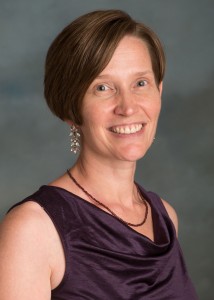CSUN Faculty’s Research in Family Child Care Reveals Financial Struggle Among Providers Despite High Professional Value
Thousands of parents in California rely on the more than 30,000 licensed family child care homes in the state to take care of their children during and after daytime work hours.
Though these providers, on average, have more than 11 years of professional experience and engage in professional development and quality improvement, a substantial number of them struggle financially, according to findings from a study led by California State University, Northridge psychology professor Holli Tonyan.

Holli Tonyan
In partnership with the Early Education and Support Division of the California Department of Education and the nonprofit Child Care Resource Center, Tonyan is the principal investigator of a federally funded research program called “Are You In? Family Child Care Providers’ Experiences in Quality Improvement,” exploring the state of family child care in California.
A large statewide initiative funded by the U.S. Department of Education called Race to the Top — Early Learning Challenge gives family child care providers support to make quality improvements and have ratings of their service made public. Tonyan and her colleagues are in the third year of studying groups of providers who are and are not participating in the quality rating and improvement system.
The study sampled family child care providers in Northern and Southern California, in the counties of Contra Costa, El Dorado, Sacramento, San Bernardino and Los Angeles, in urban and rural areas. All the providers were women and were diverse in age, ethnicity, languages and educational attainment.
“We found there is a core of committed, trained providers who have been doing this for a long time and who are very engaged in finding ways to improve what they do,” Tonyan said. “They are serving many vulnerable children, many with half or more of their children who are from low-income families eligible for subsidies to pay for child care, as well as children who are dual-language learners.”
The research is vital to understanding the state of in-home child care, Tonyan said, because past research has not done enough to identify the activities and needs of providers. Tonyan found family child care providers — including those who do not participate in a quality rating and improvement system — go to great lengths to create environments focusing on the emotional and intellectual development of children in their care, and they may need different resources depending on their care model.
“Some providers want to make sure that children feel loved, have fun and experience togetherness,” Tonyan said. “That’s something they can do because often, they take care of children starting from a very young age until they start school — and even provide afterschool care for the same child and for that child’s siblings.
“Other providers create a model of school readiness — teaching children how to be able to sit and listen to a teacher, line up and get ready to go, be familiar with printed reading material and engage in enrichment activities,” she continued. “Some do both.”
Tonyan said there is a high need for child care, but a low supply — a consequence of the changes in welfare policies by the Personal Responsibility and Work Opportunity Reconciliation Act of 1996.
“When [President Bill] Clinton reformed welfare and required families to go back to work earlier, it increased demand for child care but did not increase government support [for the supply],” Tonyan said. “In California, there aren’t enough child care providers. We need more family child care or we need a different system.”
Many of the providers in the study have been caring for children for a long time, and they even care for children after 6 p.m. and on the weekends, Tonyan said. However, their career goals are often unmet due to the financial strain.
“Their stories are really heartbreaking,” Tonyan said. “You meet someone who’s been working for 20 years, and she’s been seeking information in all sorts of different places and she’s got her associate’s degree, but when asked to rate her current ability to do different things associated with child care [on a 1 to 5 scale], she circles ‘5’ for ‘very true for me’ for everything except for ‘realize my professional goals’ — on that one, she circles a ‘1.’”
Tonyan said she hopes her findings can help fill a gap in research on family child care providers. In the future, she said, she would like to study ways to support many of the providers who care for children in mixed age groupings.
Tonyan’s student assistant on the project, Jordy Penagos, a psychology major in CSUN’s BUILD PODER program, said he enjoyed learning about the providers and was curious about the attitudes of the women’s spouses toward home child care.
“I’m going to expand the research and conduct interviews with the [providers’] husbands in the summer,” Penagos said.
For more information about Tonyan’s work, please visit www.areyouinpartnership.com.

 experience
experience